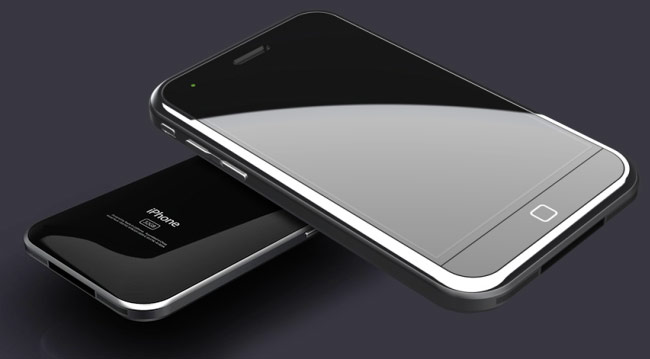
iPhone 5 Speculation From an Android User
I have been an avid Android user ever since the Nexus One came out in January of 2010. When Google released the Nexus S in December of that same year I was waiting in line on the 16th at Best Buy. And over the holidays of 2011 I was able to pick up a GSM unlocked Galaxy Nexus putting me 3 iterations of pure Google into the Android ecosystem. I have to say that for me the justification that I give for using Android over an iPhone is the fact that I use Google services for the majority of my digital life: Gmail, Google Calendar, Google Docs, Google Music, Reader, etc. Now that I have had ample time to get to know Android 4.0 Ice Cream Sandwich, I have to say that while it is huge steps in the right direction for Android, it lacks the polish and refinement of its main competitor and I have been considering making the switch, given certain criterion are met with Apple’s upcoming iPhone release.
Call me old-fashioned but I am a user who still relies on a local music library. I have not made the switch to a streaming online service for a few reasons. The main reason being that I am a freelance music engineer and adding projects that I am working on to my library is essential and something that I can’t get from a streaming service. Sure, I could use Spotify for my music library and local media for my projects, but the whole point is efficiency and productivity and to me they should all be in the same place. When Google Music became available I jumped right into it and immediately began uploading my 15,000+ song library to the cloud. The process took about 2 – 3 weeks to complete, but when it was done I had my entire library in the cloud, worry-free, or so I thought. Just like with Google’s mobile operating system, Google Music still lacks refinement and polish and small bugs that plague the service have me second-guessing. What would ultimately do it for me would be an iPhone 5 with 128GB of storage. The iPod Touch has had a maximum storage capacity of 64GB since September 9th, 2009. I would hope that almost 3 years later Apple could move on to increasing that maximum size. While iTunes Match does offer some functionality that is appealing, the fact is that it is a paid service. On top of that, aside from music, storage of media content on a portable device can fill up quickly if you are carrying HD video, music, and many photos. It’s time to up the ante on the local storage for the iPhone 5.
Screen size. Yeah I said it, but let’s take a look at what Apple will do from a practical standpoint. When they made the jump to the Retina Display, it was a simple move. Double the resolution, no screen-size change and have developers create double-sized assets for applications. The simple 2x calculation for the CPU made things easy, but if Apple wants to increase the screen size on the next iPhone, they are going to lose their precious pixel density that makes the Retina Display so beautiful. Let’s say that Apple wanted to increase the iPhone’s screen to just .25″ larger at 3.75″ and maintain the same resolution. That would leave the pixel density at 307ppi and below Steve Job’s magical number of 326. If they increase the screen size by a half inch and bump it to 4″ the resulting pixel density drops even further to 288. So what would be a logical move to increase the screen size, but still maintain Retina-like pixel density without creating a new resolution fork for developers?
If recent rumors are true, the next iPad is alleged to bump its resolution by 2x up to 2048×1536, again a simple doubling. Let’s also take a look at this: Apple has recently made a change to the iTunes App Store submission policy, now making it a requirement that developers submit Retina Display size (640×960) screenshots. To me, this is a sign that they will be beginning to cut to the cord for non-Retina Display devices (iPhone 3GS and older). If Apple uses the original iPad resolution 1024×768 on the next iPhone that would allow for them to bump the screen size up to a full 4″ and keep a pixel density of 320ppi. Developers would still have a resolution that most have already provided assets for, and legacy applications would become slightly blurred (although less blurred than legacy apps on the current Retina Display). Aside from doubling the Retina Display resolution again to 1280×1920, this seems like the most logical path for Apple to take.
Last on my must-have list is turn-by-turn navigation. Remember that whole iPhone GPS tracking scandal that Apple went through a little while back? Apple’s response was that they were working on a new mapping feature and one of the major items that Android has on Apple is the built-in turn-by-turn navigation baked into the Maps application. I would be truly shocked if Apple didn’t include this in their next smartphone, especially since the it could be very well integrated with Siri.
I’ll leave my wish list at that for now, but expect more updates soon as I figure them out.
Comments are now closed for this article
Let's just pretend that I have proper "Copyright" on this stuff, but when it comes down to it, feel free to use this however you see fit.